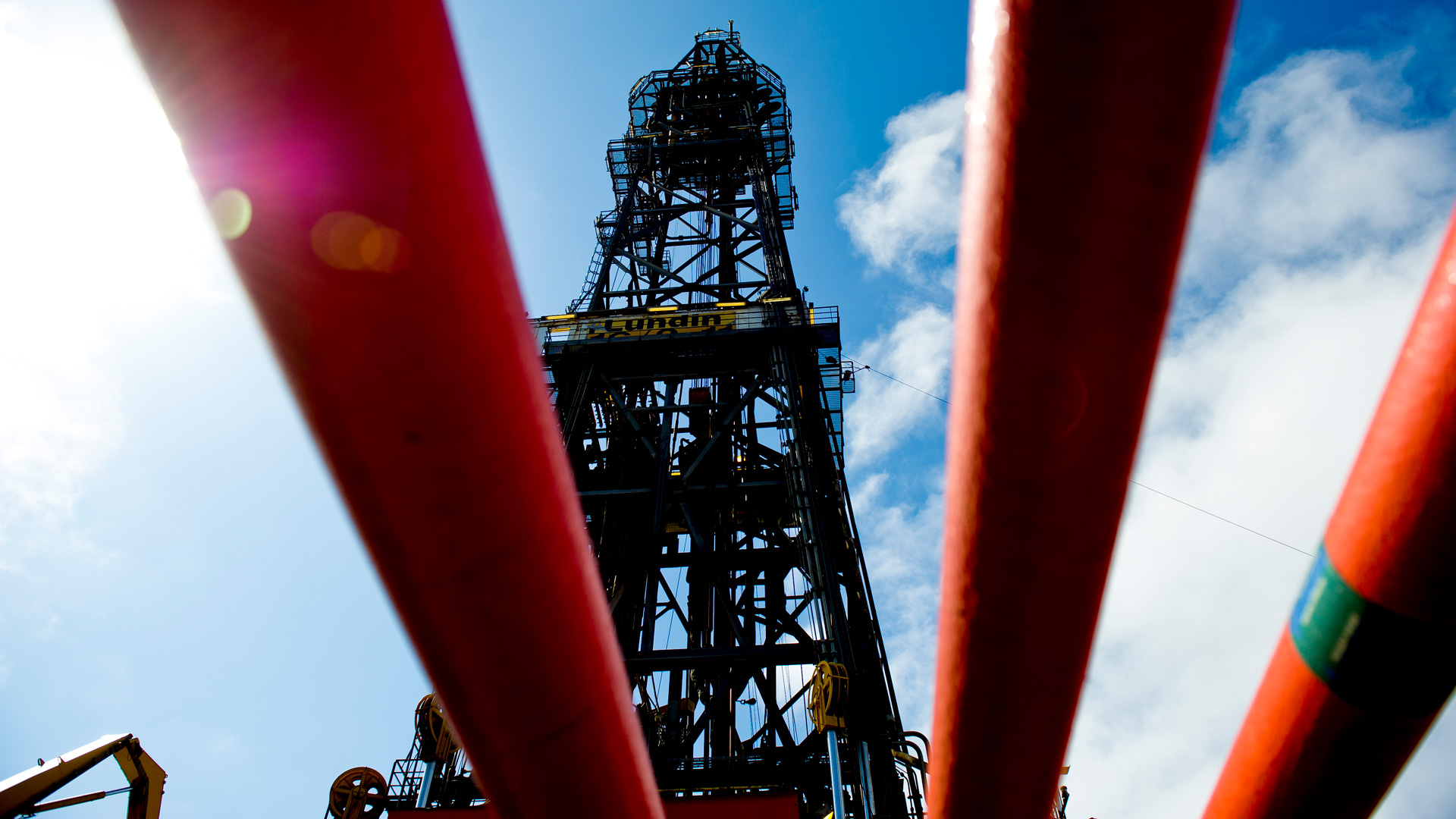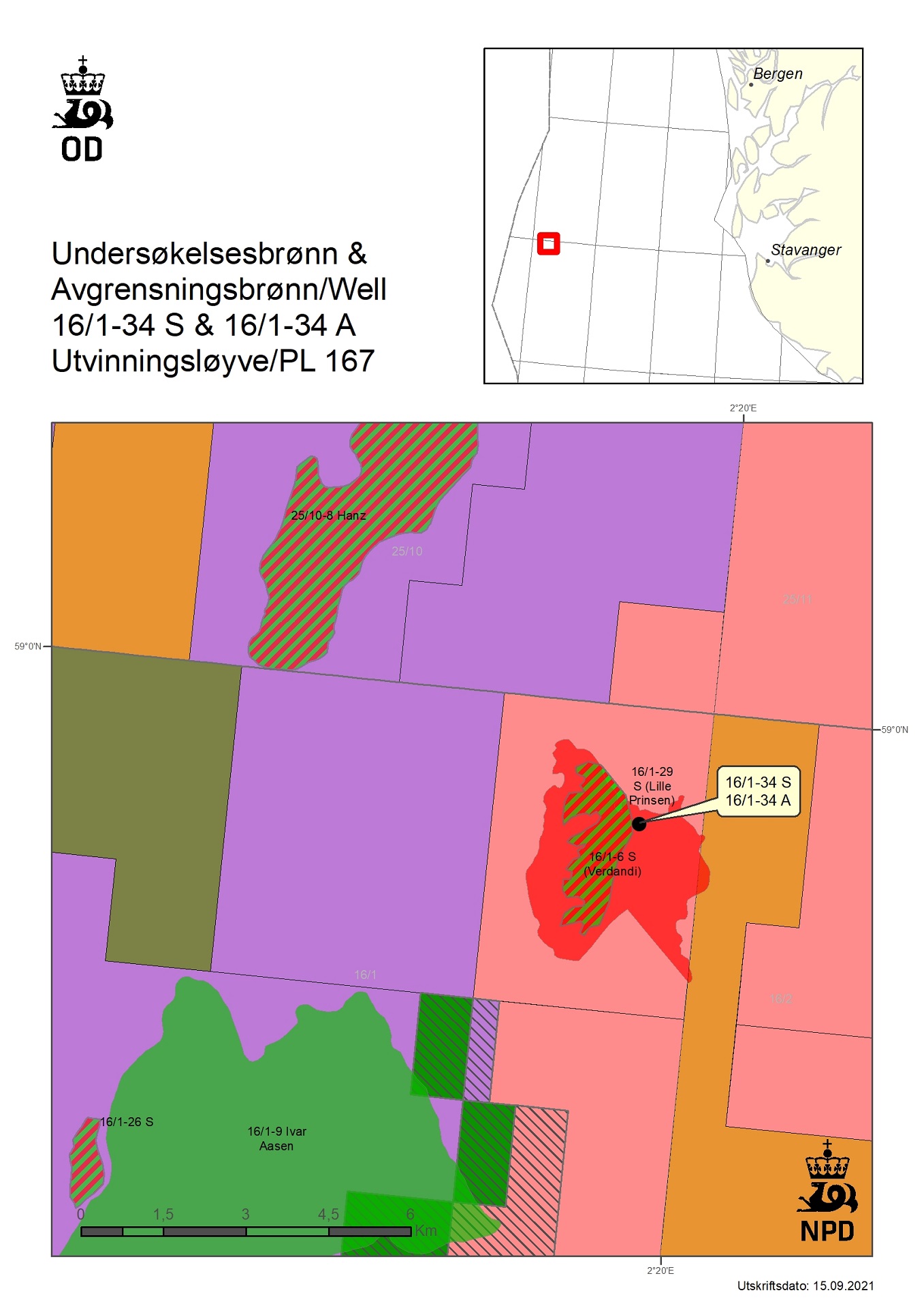Delineation of the 16/1-29 S (Lille Prinsen) oil and gas discovery and minor oil discovery near the Edvard Grieg field in the North Sea – 16/1-34 S and A

Illustration photo.
9/16/2021 Lundin Energy Norway AS, operator of production licence 167, has concluded the drilling of wildcat well 16/1-34 S and appraisal well 16/1-34 A on the 16/1-29 S (Lille Prinsen) oil and gas discovery.
The wells were drilled about 15 kilometres north of the Edvard Grieg field in the North Sea and 200 kilometres west of Stavanger.
Discovery 16/1-29 S (Lille Prinsen) was proven in 2018 in reservoir rocks from the Eocene (the Grid Formation), the Palaeocene (the Heimdal Formation) and the Permian (the Zechstein Group). Resources were also proven in Jurassic/Cretaceous reservoirs through appraisal/delineation drilling of 16/1-30 S and A in 2019, which are included in the resource estimate for the discovery.
Before 16/1-34 S and A were drilled, the operator’s resource estimate for 16/1-29 S (Lille Prinsen) was between 1.4 and 5.7 million standard cubic metres (Sm3) of recoverable oil equivalent for the reservoirs from the Jurassic/Cretaceous and Permian Ages.
The objective of wildcat well 16/1-34 S was to prove commercial volumes of oil in sandstone from the Palaeocene Age (the Heimdal Formation). The secondary exploration target was to prove oil in sandstone from the Early to Middle Jurassic Age.
Well 16/1-34 S encountered an oil column of about 7 metres in the Heimdal Formation, with a 50-metre thick sandstone layer with good reservoir quality. The oil/water contact was encountered at 1820 metres below sea level. Liquid samples show good oil quality. No permeable sandstone layers were encountered in the secondary exploration target in the Jurassic.
Preliminary estimates place the size of the discovery between 0.3 and 1.6 million standard cubic metres (Sm3) of recoverable oil.
The objective of appraisal well 16/1-34 A was to confirm the presence, quality and flow properties in dolomitic rocks from the Permian Age in the 16/1-29 S (Lille Prinsen) oil and gas discovery. The secondary exploration target was to investigate the presence and quality of sandstone from the Palaeocene Age (the Heimdal Formation).
Well 16/1-34 A encountered an oil column of about 66 metres, of which 46 metres in dolomite from the Permian Age, with good reservoir quality. About 20 metres of the oil column were encountered in basement rock with poor reservoir quality. The oil/water contact was encountered at about 1932 metres below sea level.
The preliminary estimate of the size of discovery 16/1-29 S (Lille Prinsen), in rocks from the Permian and the Jurassic/Cretaceous Age as well as basement rock, is between 1.6 and 8 million standard cubic metres (Sm3) of recoverable oil.
In the secondary exploration target, 16/1-34 A proved 18 metres of water-filled sandstone in the Heimdal Formation, with poor reservoir quality.
The licensees are considering a subsea development to the Ivar Aasen or Edvard Grieg host platforms.
Well 16/1-34 S was not formation-tested, but systematic data acquisition and sampling have been carried out.
A successful formation test has been conducted in the dolomites in the Zechstein Group in well 16/1-34 A. The maximum production rate was 570 standard cubic metres (Sm3) oil per flow day through a 42/64-inch nozzle opening.
These are the ninth and tenth exploration wells in production licence 167. The licence was awarded in the 13th licensing round in 1991.
Wells 16/1-34 S and 16/1-34 A were drilled to respective measured depths of 2353 and 2165 metres below sea level, and respective vertical depths of 2095 and 1994 metres below sea level. Well 16/1-34 S was terminated in the Skagerrak Formation from the Late Triassic Age and well 16/1-34 A was terminated in basement rock.
Water depth at the site is 112 metres. The wells have been plugged and abandoned.
The wells were drilled by the Deepsea Stavanger drilling facility, which will now drill wildcat well 16/4-12 in production licence 981 in the North Sea, where Lundin Energy Norway is the operator.

Director Communication, public affairs and emergency response
Updated: 9/16/2021